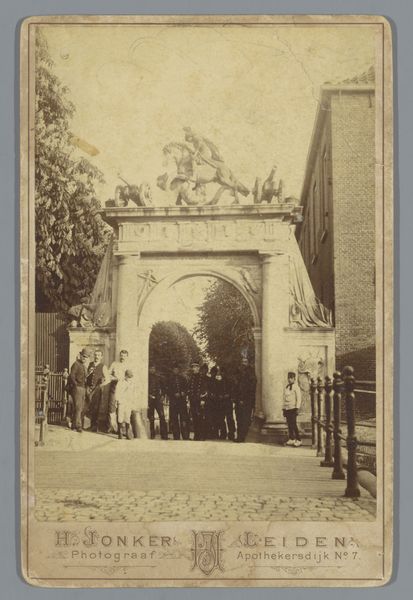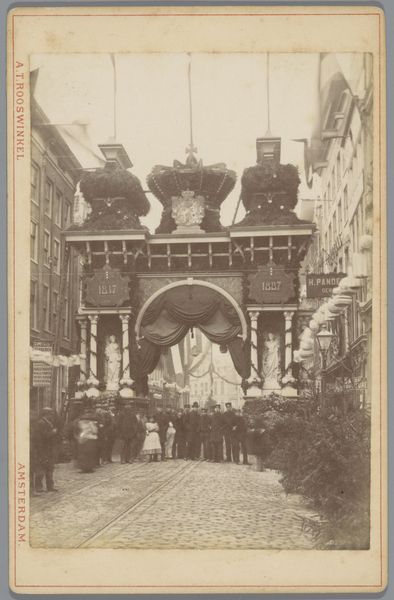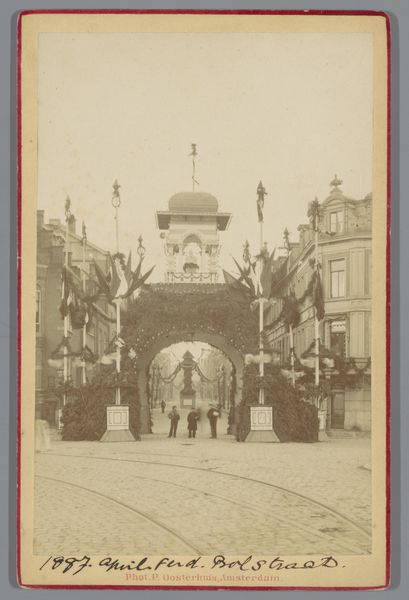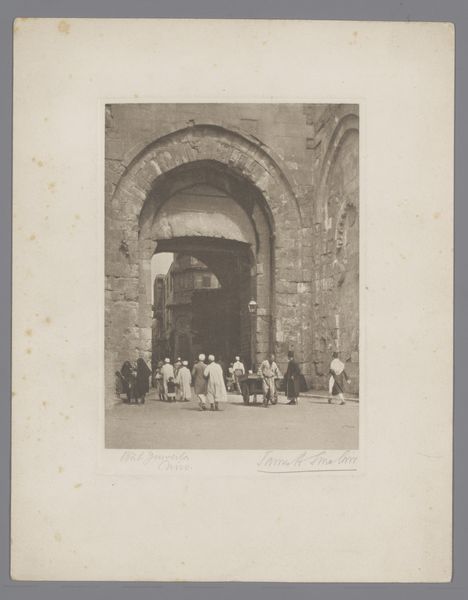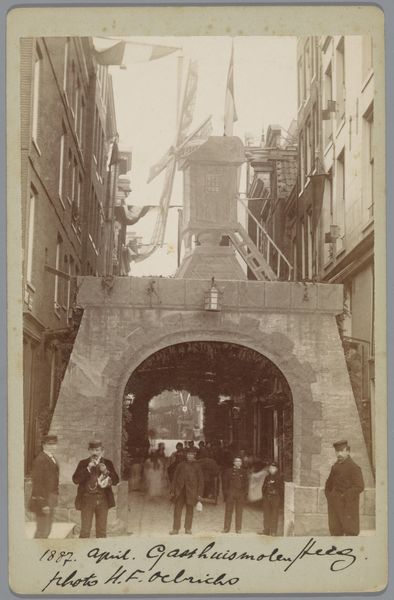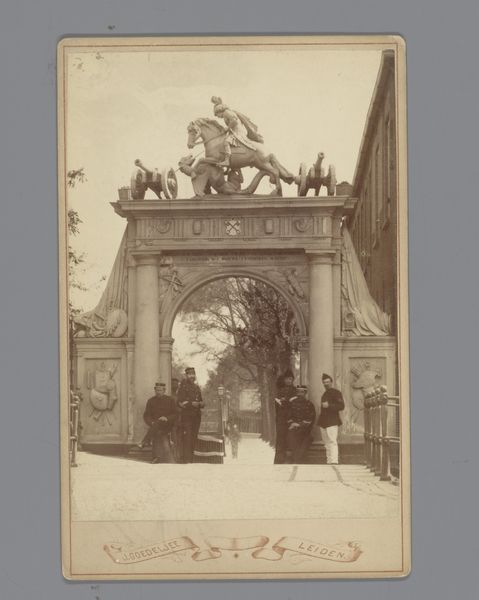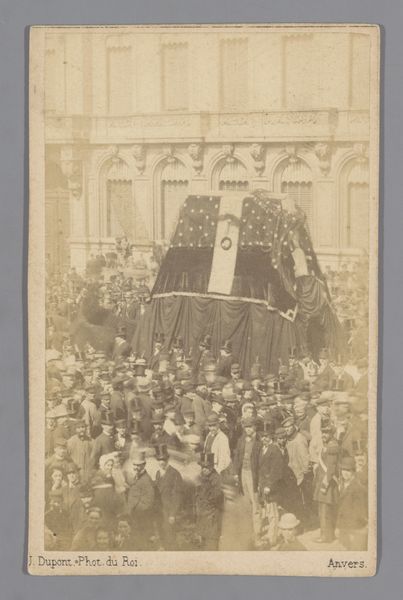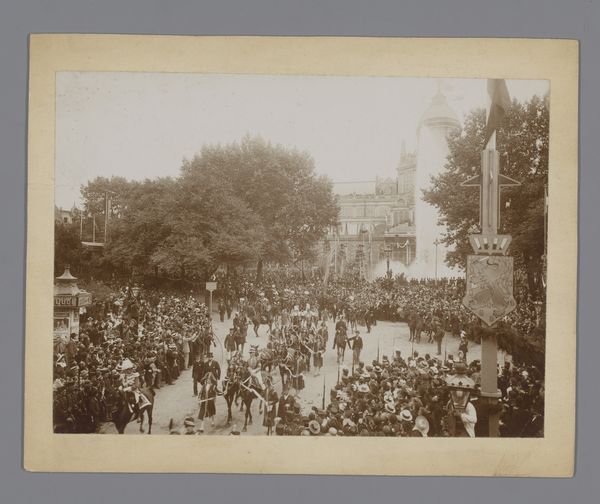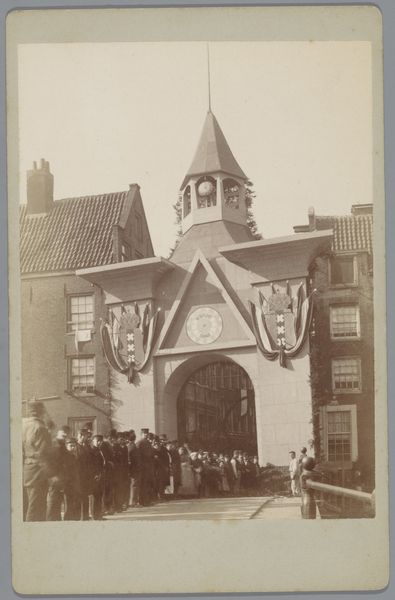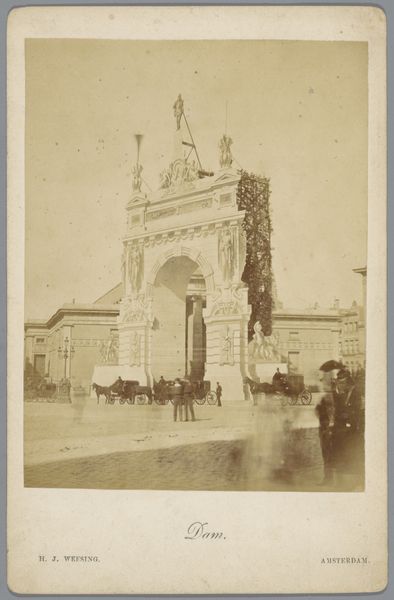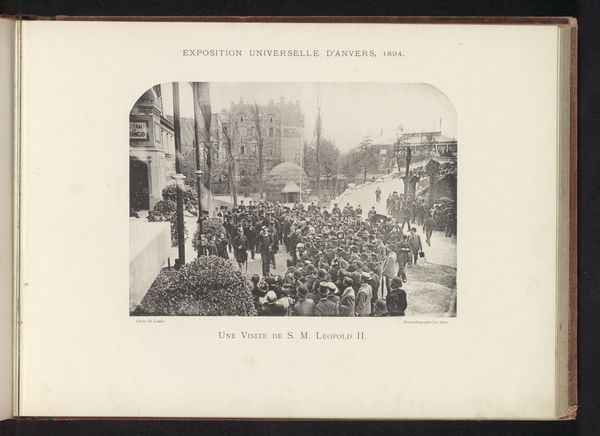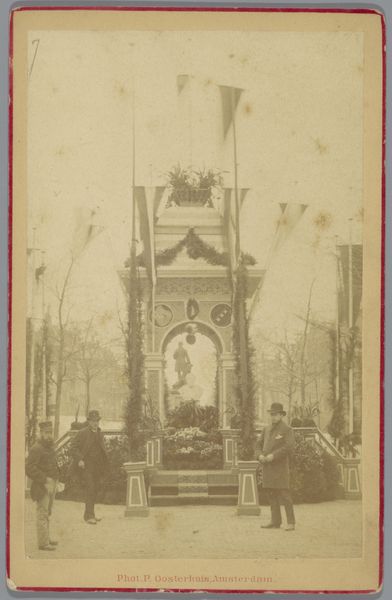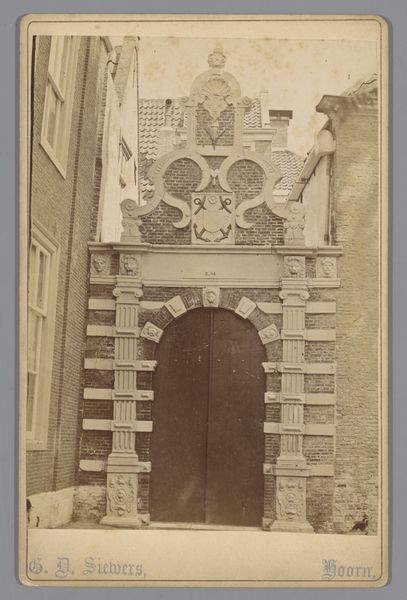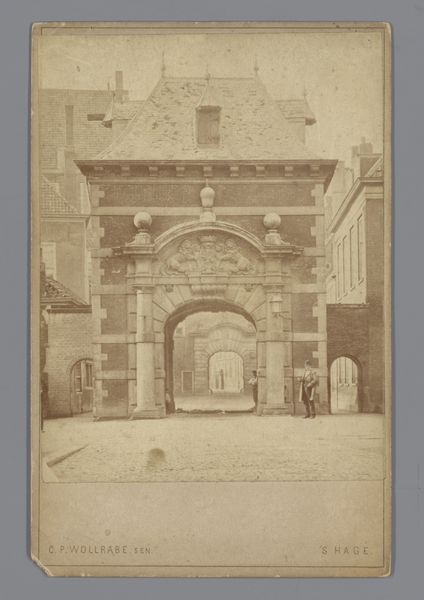
photography, gelatin-silver-print
#
portrait
#
photography
#
gelatin-silver-print
#
19th century
#
street
Dimensions: height 167 mm, width 108 mm
Copyright: Rijks Museum: Open Domain
Curator: This captivating gelatin silver print, possibly from 1889, is titled "View of the Willemsstraat in Amsterdam" by Andreas Theodorus Rooswinkel. What's your initial reaction to it? Editor: There’s a certain formal elegance to it, wouldn't you say? The clear linear perspective, the way the cobbled street leads the eye directly through the arch. And that strong verticality in the structure. Curator: Indeed. Consider that Rooswinkel likely made this photograph at a time of intense social change in Amsterdam. The late 19th century saw increasing urbanization and a burgeoning sense of national identity. The festooned arch is practically an overture for civic pride. Who is this celebration for, what specific narrative does it convey about class and societal standing? Editor: Yes, and it creates a clear focal point—all the perspective lines lead to it. It segments the street, almost framing and thereby elevating it. This lends symbolic weight to the everyday—this celebration is supposed to change the perspective of this place, however ephemeral it might be. Curator: The materiality is crucial. A gelatin silver print offered a level of detail and tonal range previously unattainable. And look at the blurred figures—they remind us of how photographic exposures reflected the positionality of everyday people relative to their time and historical events. Were they participants or observers, included or excluded from this grand tableau? Editor: It makes the whole photograph seem alive and lived-in! It invites the viewer to not just examine its composition but to also insert themselves in that very setting and moment, bridging the gap of history, class, and identity that may otherwise obscure any relation to that event or setting. Curator: Precisely. Photography has the remarkable capacity to archive collective memory, allowing us to engage with our complex histories on an immediate level, challenging prevailing perceptions and giving a new critical meaning to community and nationhood. Editor: Analyzing Rooswinkel's perspective gives rise to several layers of potential meanings—ones where aesthetic design and function reflect the zeitgeist. It's not merely a view of the street, but of a people celebrating—its layout serves to underscore the grandness of such an event.
Comments
No comments
Be the first to comment and join the conversation on the ultimate creative platform.
